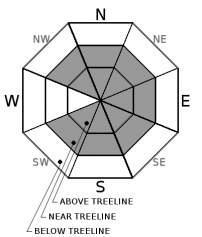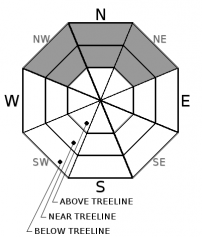| Wednesday | Wednesday Night | Thursday | |
|---|---|---|---|
| Weather: | Cloudy with widespread snow showers in the morning. Snow showers decreasing in the afternoon. | Partly cloudy with a chance of snow showers through the night. | Sunny |
| Temperatures: | 26 to 31 deg. F. | 12 to 17 deg. F. | 24 to 29 deg. F. |
| Mid Slope Winds: | Southwest shifting to northwest in the afternoon | North | Northeast |
| Wind Speed: | 20 to 35 mph with gusts to 70 mph decreasing to 15 to 20 mph with gusts to 45 mph in the afternoon | 10 to 15 mph with gusts to 30 mph increasing to 50 mph after midnight. | 15 to 25 mph with gusts 40 mph in the morning decreasing in the afternoon |
| Expected snowfall: | 2 to 6 | up to 1 | 0 |
| Wednesday | Wednesday Night | Thursday | |
|---|---|---|---|
| Weather: | Cloudy with widespread snow showers in the morning. Snow showers decreasing in the afternoon. | Partly cloudy with a chance of snow showers through the night. | Sunny |
| Temperatures: | 23 to 29 deg. F. | 9 to 15 deg. F. | 23 to 28 deg. F. |
| Ridge Top Winds: | Southwest shifting to northwest in the afternoon | North | Northeast |
| Wind Speed: | 40 to 60 mph with gusts to 110 mph decreasing to 20 to 30 mph with gusts to 55 mph in the afternoon | 20 to 35 mph with gusts to 50 mph increasing to 75 mph after midnight | 30 to 45 mph with gusts to 85 mph decreasing to 25 to 35 mph with gusts to 65 mph in the afternoon |
| Expected snowfall: | 3 to 7 | up to 1 | 0 |




























